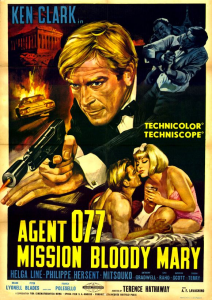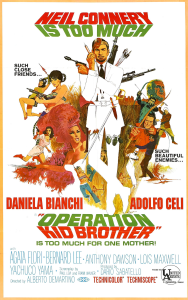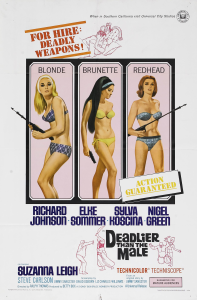After much delay, the latest James Bond movie is finally coming out next week.
Hopefully, No Time to Die will bring the kind of super-spy thrills Black Widow kept threatening to deliver but never really did. In fact, aside from a few scenes (mostly between Pugh and Johansson), that whole film was a bit of a mess. There was jarringly incoherent characterization all over the place, from the radically flowing accents to Melina’s sudden personality shift. And I’m not sure how this crass version of the Red Guardian could become a sleeper agent in Ohio and pretend to be an average American for one moment… Perhaps there was a joke in there which got lost along the way? In fact, while I’m fine with turning Red Guardian into a caricature, even this idea is seriously wasted – except for the tattoos, the movie forgets to have fun with the fact that he was a communist, in contrast, for example, to the depiction of Love Sausage in The Boys (the comic, not the show).
Still, I could disregard all this in the name of a certain bubbly spirit, but given Black Widow‘s generic story, villain, and action scenes, there is very little else to hold on to. This is all the more disappointing because so far the MCU had expertly used sci-fi/fantasy as a springboard for imaginative visuals (like in the climaxes of Iron Man 3 or Ant-Man and the Wasp, not to mention Yondu’s glorious massacre in Guardians of the Galaxy, vol.2, to the beat of ‘Come a Little Bit Closer’), with even the hackiest entries – Thor: The Dark World and Dr. Strange – benefitting from highly amusing set pieces. Who would’ve thought that the only Marvel movie to actually bore me would be about secret agents?
(For once, DC actually wins the blockbuster game: James Gunn’s The Suicide Squad had its fair share of flaws, but it was often damn funny, committedly weird, and refreshingly unpredictable, applying its caustic approach not just to superheroes, but to the whole black ops subgenre, including the politics… Plus, it stars the goddamned Polka-Dot Man!)
But let’s get back to Bond… I can’t say I’ve missed that smug British spy, really, since he has continued to star in some pretty neat comics over these past years, so it’s been fairly easy to get my 007 fix whenever I felt like it.
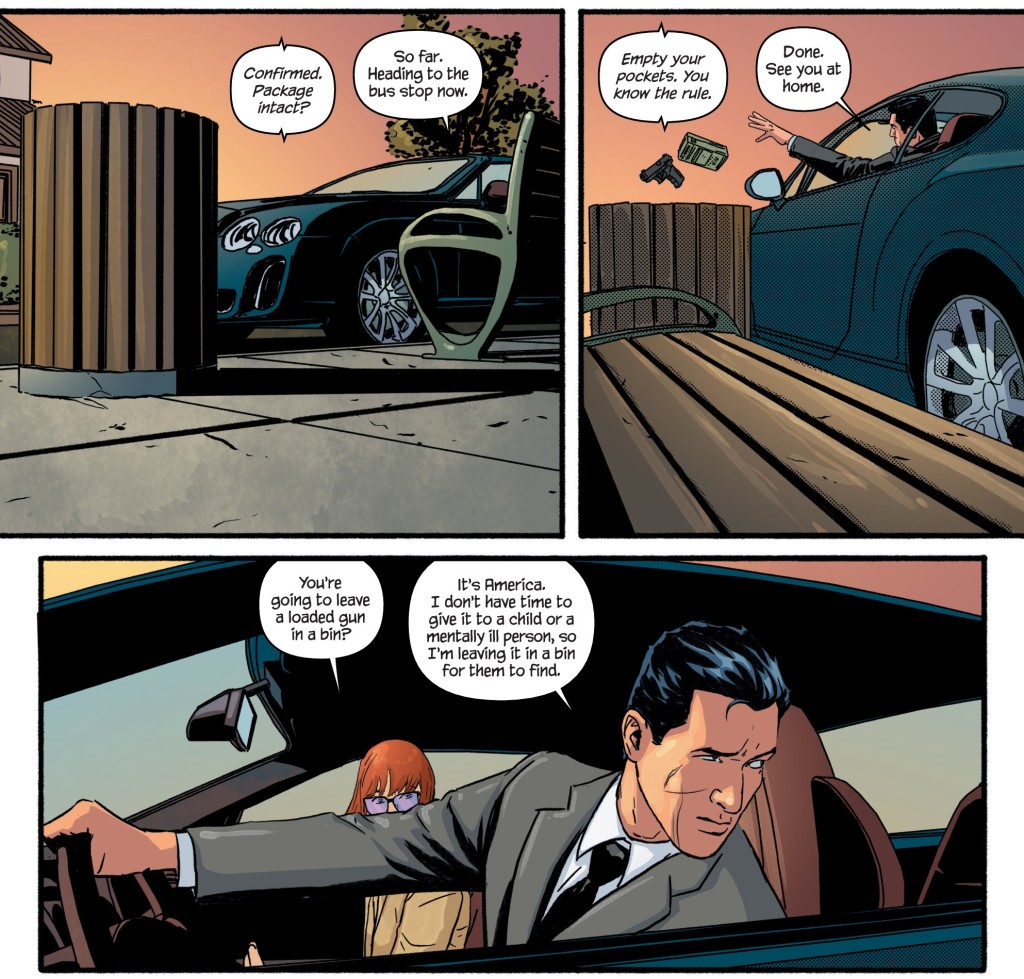 Ian Fleming’s James Bond #7
Ian Fleming’s James Bond #7
Dynamite has done a bang-up job with this franchise ever since its 2015 comic reboot, starting with the decision of hiring Warren Ellis to write the first couple of arcs. Ellis may have turned out to be uncomfortably close to Bond’s own attitude towards sex in real life, but his take on this material was as slick as they come (as I’ve mentioned before). Efficiently illustrated by Jason Masters, the opening run managed to cleverly retool old ingredients like the sci-fi gadgets, deathtraps, idiosyncratically named women, and larger-than-life villainy, giving them a cool polish that made them badass rather than campy.
Ellis clearly broke the formula down to its core components before rebuilding it for the 21st century, even paying homage to little bits from the original, like Q’s sarcastic attitude towards James Bond’s handgun or the fact that airport arrivals were often moments of surveillance and deception. The result fits in with my preferred approach to 007, which rests on a solid basis of spycraft that is gradually taken up a notch into offbeat directions. While I don’t look for a grounded, intricate web of believable intrigue in Bond’s adventures (I look for it in BBC’s awesome show Vigil), I appreciate an initial layer of authenticity on which to build the fantasy.
Plus, you know… lots of violence.
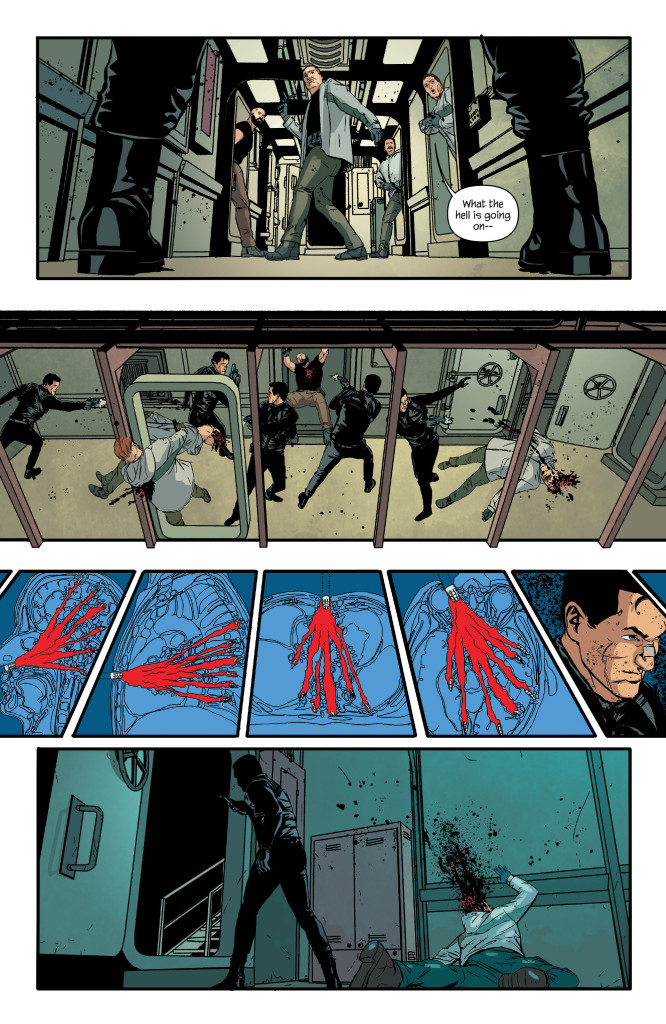 Ian Fleming’s James Bond #6
Ian Fleming’s James Bond #6
In line with Ian Fleming’s novels, James Bond is characterized by an unabashedly vicious ruthlessness. Bond’s sadism isn’t always properly acknowledged as a key trait of the character, but it was still quite prominent in the earlier films, when Sean Connery first embodied the role. Hell, have a look at how similarly Connery plays another despicable character in the Hitchcockian thriller Woman of Straw (or even in Marnie, which was actually directed by Hitchcock) – you can easily envision his Bond doing all of those callous, arrogant, manipulative actions, the main difference being that 007 ostensibly does it for King and Country rather than for greed.
The following comics kept the high standard. In Black Box, Benjamin Percy likewise embedded classic Bond tropes – ski chases, gambling, sharks, trains, a weaponized Aston Martin – in a contemporary sci-fi plot about eroding privacy through both online data breaches and omnipresent phone cameras (at one point, Bond even spots an assassin thanks to a selfie stick!). Against the backdrop of a global information war, the story places 007 in a bit of a moral dilemma, as saving the world may actually entail going against his mission, i.e. against the UK government’s interests… This has been the case in the past, of course, but James ‘less man than biological weapon’ Bond has rarely given it a second thought before.
Writer Andy Diggle, artist Luca Casalanguida, and colorist Chris Blythe proved themselves to be a powerhouse combo with Hammerhead and Kill Chain, a couple of twisty adventures sprinkled with geopolitics and more than enough balls-to-the-wall action to satisfy the most thrill-seeking Bond fans. Granted, the pace is so frantic that it may sometimes feel like you are fast-forwarding through a globetrotting blockbuster movie, but I prefer to think of it as an emulation of 007’s own attitude: like the super-agent himself, the creative team has a focused approach, sharply getting to the point of each scene with maximum impact and without fussing around with needless ornaments, whether they’re dealing with a gunfight or with a revealing bit of flirty dialogue.

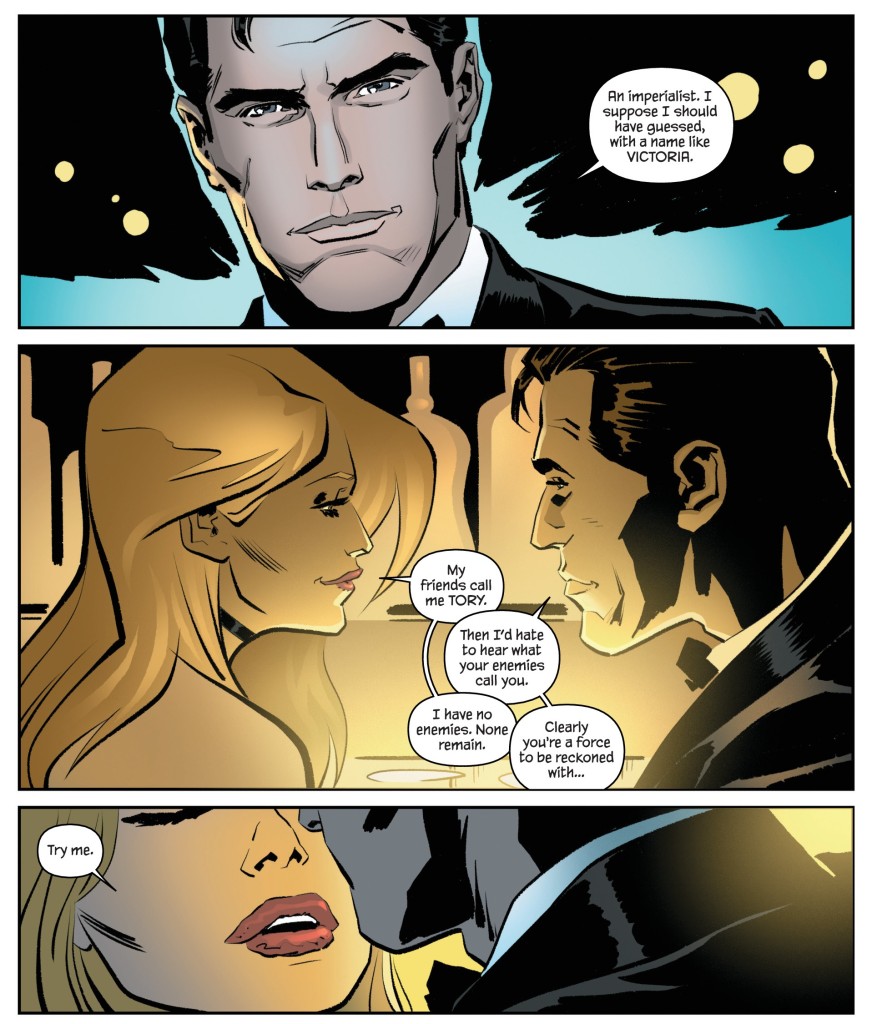 Hammerhead #2
Hammerhead #2
As far as I’m concerned, Luca Casalanguida has become the definite artist for this incarnation of the character… Some of his images deserve a place next to iconic moments from the movies like Honey Ryder coming out of the waters or Jill Masterson’s gold-covered corpse. Moreover, Casalanguida has continued to deliver in Christos Gage’s nifty mini-series James Bond, Agent of SPECTRE, now with a grimier palette, courtesy of Heather Moore.
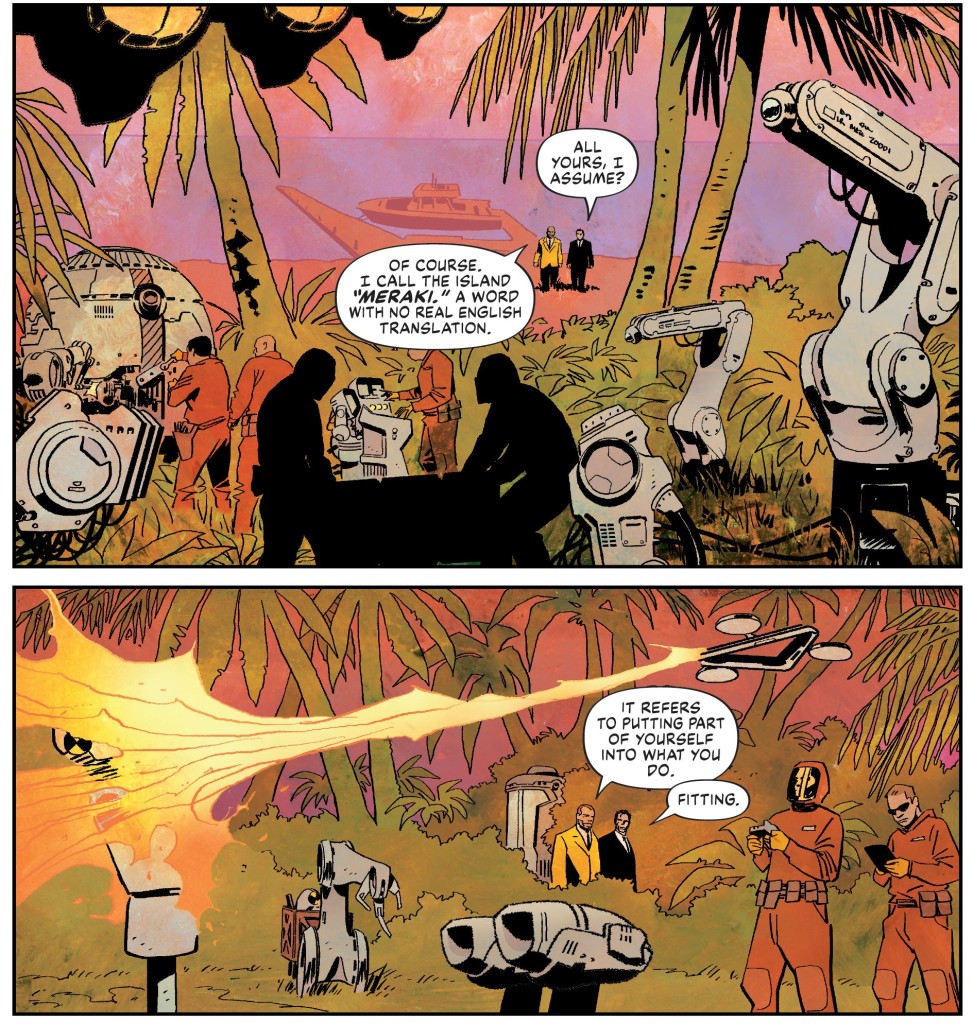 James Bond, Agent of SPECTRE #4
James Bond, Agent of SPECTRE #4
Say what you will about the publisher’s despicable political ties, Dynamite’s comics have often been more ideologically provocative than your average Bond yarn. Declan Shalvey penned an M one-shot about the Northern Irish conflict, digging up some of the UK’s dirt. Kill Chain updated a classic Cold War plot – about playing both sides against the middle – to an era of US isolationism, when the American presidency appeared to be in bed with Russia (there was an epilogue in the graphic novel Reflections of Death, which was actually more of an ill-disguised anthology). Like Benjamin Percy and Andy Diggle, Kieron Gillen (Service) and Ales Kot (The Body) tapped into the Brexit/Trump zeitgeist, sneaking in a more problematized take on the franchise’s inherent nationalism while nevertheless keeping the overall thriller formula.
One character who earned points in the intersectionality department was M’s secretary, Moneypenny, now black and a highly capable security agent in her own right, clearly modelled after Naomie Harris’ performance in Skyfall. Building on an ironic quip from On Her Majesty’s Secret Service (‘Same old Moneypenny. Britain’s last line of defense.’), Ellis and Diggle wrote her as a butt-kicking assistant who doubled as M’s bodyguard – a characterization that Jody Houser ran with in 2017’s Moneypenny special.
To be fair, there is a precedent for a gun-toting Moneypenny going back to the sixties, if you count the unofficial spin-off movie Operation Kid Brother, starring Sean Connery’s younger brother as, well, 007’s younger brother (who also happens to be a surgeon with hypnotizing powers) – one of many delirious Eurospy rip-offs to come out at the time.
(In my head-canon, Operation Kid Brother totally counts as a Bond flick… and so does Michael Bay’s The Rock, by the way!)
More recently, writers Vita Ayala and Danny Lore further increased the diversity through their fun stab at a James Bond ongoing series. Working with artist Eric Gapstur (soon followed by Erica D’Urso and Brent Peeples), they’ve introduced another prominent female black character, Brandy Keys, a resourceful insurance claim investigator that crosses paths with 007 during an art forgery case whose stakes keep escalating. Even without the story’s surprise reveal later on, Keys’ and Bond’s banter alone is worth the ride:
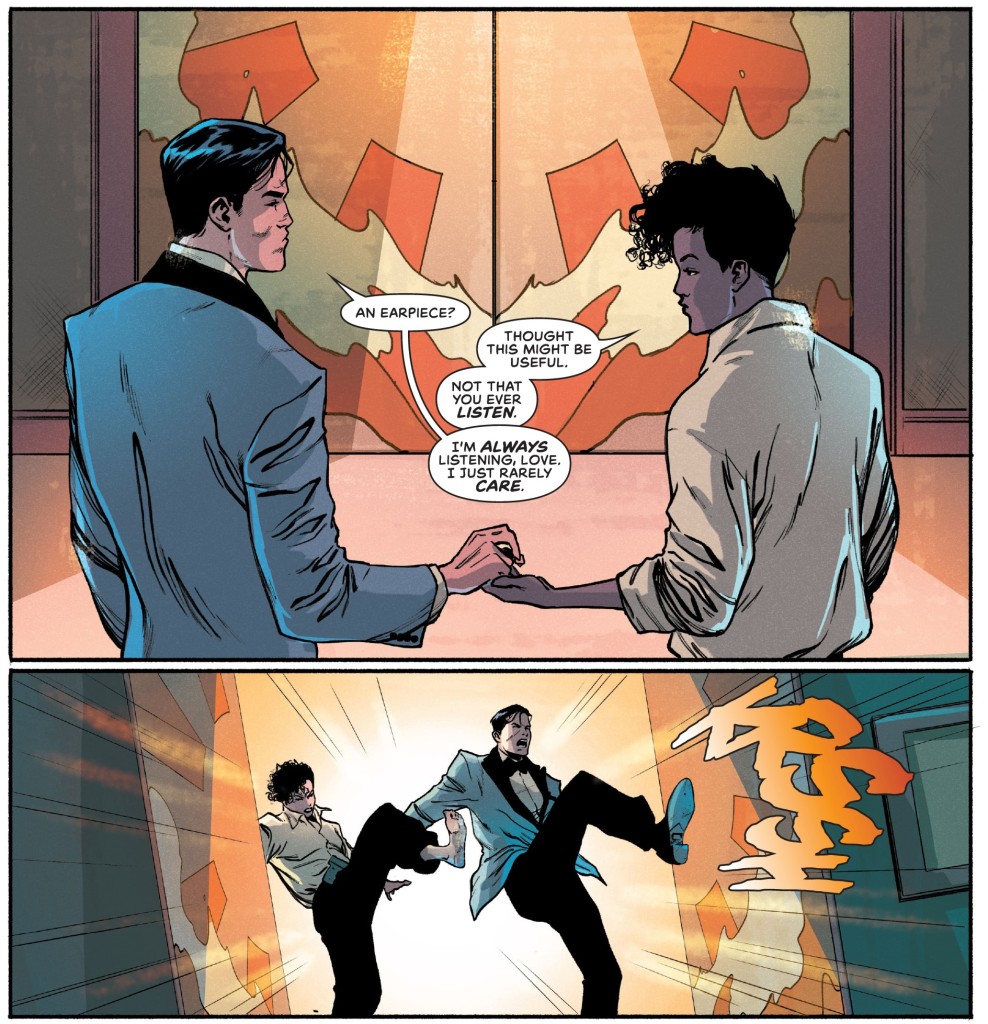 James Bond (v3) #6
James Bond (v3) #6

